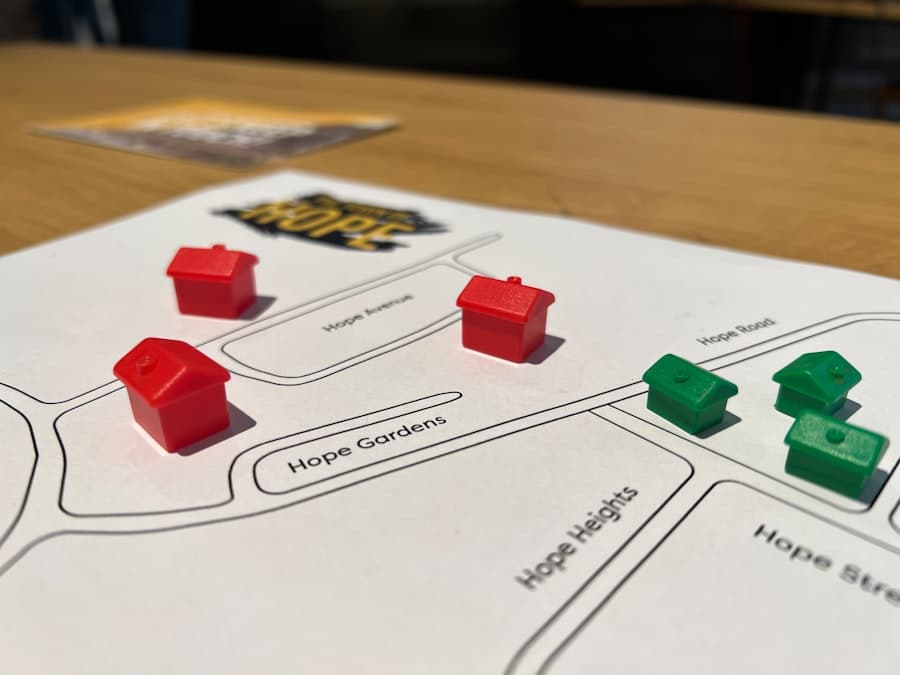Gamified learning has emerged as a transformative approach in education and professional development, leveraging game design elements to enhance engagement and motivation among learners. This innovative method integrates aspects such as point scoring, leaderboards, and challenges into educational contexts, creating an interactive environment that fosters deeper learning experiences. The concept is rooted in the understanding that traditional educational methods often fail to captivate the modern learner, who is accustomed to the dynamic and immersive nature of video games.
By incorporating game mechanics into learning processes, educators and organizations can create a more stimulating atmosphere that encourages participation and retention of knowledge. The rise of gamified learning can be attributed to several factors, including advancements in technology, the increasing prevalence of digital natives in the workforce, and a growing recognition of the importance of soft skills alongside technical expertise. As industries evolve and adapt to rapid changes, the need for continuous learning becomes paramount.
Gamified learning not only addresses this need but also aligns with the preferences of a generation that thrives on interactivity and instant feedback. By transforming mundane training sessions into engaging experiences, gamified learning holds the potential to revolutionize how individuals acquire and apply new skills.
Key Takeaways
- Gamified learning is a method of teaching that uses game design elements to engage and motivate learners.
- Skill gaps in industries can lead to decreased productivity, increased turnover, and a lack of innovation.
- Gamified learning can help close skill gaps by increasing engagement, motivation, and knowledge retention.
- Examples of gamified learning in various industries include using simulations, leaderboards, and rewards to teach and reinforce skills.
- Challenges and limitations of gamified learning include the need for careful design, potential for disengagement, and difficulty in measuring effectiveness.
The Impact of Skill Gaps in Industries
Skill gaps have become a pressing concern across various industries, posing significant challenges to organizations striving for competitiveness and innovation. A skill gap occurs when there is a disparity between the skills that employers require and those that job seekers possess. This phenomenon can lead to decreased productivity, increased hiring costs, and a slowdown in overall economic growth.
For instance, a report from the World Economic Forum highlights that by 2025, over 85 million jobs may be unfilled due to a lack of skilled workers. This statistic underscores the urgency for industries to address skill shortages proactively. The impact of skill gaps is particularly pronounced in sectors such as technology, healthcare, and manufacturing.
In the tech industry, rapid advancements in artificial intelligence, machine learning, and cybersecurity have outpaced the ability of educational institutions to produce adequately trained professionals. Similarly, healthcare faces a shortage of skilled practitioners capable of navigating complex medical technologies and patient care protocols. Manufacturing industries are grappling with the need for workers who can operate advanced machinery and understand automation processes.
These skill gaps not only hinder organizational growth but also limit individuals’ career advancement opportunities, perpetuating a cycle of underemployment and dissatisfaction.
The Benefits of Gamified Learning in Closing Skill Gaps

Gamified learning offers a multifaceted solution to bridging skill gaps by enhancing engagement, motivation, and retention among learners. One of the primary benefits is its ability to create an immersive learning environment that encourages active participation. Traditional training methods often rely on passive learning techniques, such as lectures or reading materials, which can lead to disengagement.
In contrast, gamified learning transforms these experiences into interactive challenges where learners can earn rewards for completing tasks or mastering new skills. This sense of achievement not only boosts motivation but also reinforces the learning process. Moreover, gamified learning facilitates immediate feedback, allowing learners to understand their progress in real-time.
This instant feedback loop is crucial for skill development, as it enables individuals to identify areas for improvement and adjust their learning strategies accordingly. For example, a gamified platform might provide users with performance analytics that highlight strengths and weaknesses, guiding them toward targeted resources or additional practice opportunities. This personalized approach ensures that learners can focus on specific skills that require enhancement, ultimately leading to more effective skill acquisition.
Examples of Gamified Learning in Various Industries
Numerous industries have successfully integrated gamified learning into their training programs, showcasing its versatility and effectiveness. In the corporate sector, companies like Deloitte have implemented gamified platforms for employee training and development. Deloitte’s “Leadership Academy” uses game mechanics to engage employees in leadership training modules, allowing them to earn badges and compete on leaderboards while developing essential management skills.
This approach not only enhances knowledge retention but also fosters a sense of community among participants. In healthcare, organizations are utilizing gamified learning to train medical professionals in critical skills such as surgical procedures or patient care protocols. For instance, the “Touch Surgery” platform offers virtual simulations where healthcare providers can practice surgical techniques in a risk-free environment.
By incorporating gamification elements like scoring systems and timed challenges, this platform encourages practitioners to refine their skills while tracking their progress over time. Such applications not only improve individual competencies but also contribute to better patient outcomes.
Challenges and Limitations of Gamified Learning
Despite its numerous advantages, gamified learning is not without challenges and limitations. One significant concern is the potential for oversimplification of complex subjects. While game mechanics can enhance engagement, they may inadvertently lead to a superficial understanding of intricate topics if not designed thoughtfully.
For example, if a gamified module focuses solely on point accumulation without adequately addressing the underlying concepts, learners may excel in gameplay while lacking a comprehensive grasp of the material. Another challenge lies in the varying levels of technological proficiency among learners. While digital natives may thrive in gamified environments, older generations or those less familiar with technology may struggle to adapt.
This disparity can create barriers to effective learning and may result in frustration or disengagement among certain groups. Additionally, organizations must consider the costs associated with developing and implementing gamified learning solutions. While many platforms offer off-the-shelf options, custom solutions tailored to specific organizational needs can be resource-intensive.
Strategies for Implementing Gamified Learning in Industries

To effectively implement gamified learning within an organization, several strategies should be considered.
Organizations must identify specific skills or knowledge areas they wish to address and design gamified experiences that directly support these goals.
For instance, if an organization aims to enhance teamwork skills among employees, incorporating collaborative challenges or team-based competitions can foster cooperation while achieving educational outcomes. Another critical strategy involves ensuring inclusivity in gamified design. Organizations should strive to create experiences that cater to diverse learner profiles by offering varying levels of difficulty and accommodating different learning styles.
Providing options for both competitive and cooperative gameplay can help engage a broader audience while promoting collaboration among participants. Additionally, organizations should prioritize user feedback during the development process to refine gamified elements based on actual learner experiences.
Case Studies of Successful Implementation of Gamified Learning
Several organizations have successfully implemented gamified learning strategies that serve as exemplary models for others seeking to close skill gaps. One notable case is Cisco’s “Cisco Networking Academy,” which utilizes gamification to teach networking skills to students worldwide. The program incorporates interactive simulations and challenges that allow learners to apply theoretical knowledge in practical scenarios.
By fostering an engaging environment where students can earn certifications through gameplay, Cisco has significantly increased enrollment and completion rates while equipping learners with valuable skills for the job market. Another compelling example comes from the financial services sector, where American Express developed a gamified training program called “The Game of Life.” This initiative aimed to enhance employees’ understanding of customer service principles through role-playing scenarios that mimic real-life interactions with clients. Participants earn points for demonstrating effective communication strategies and problem-solving skills during these simulations.
The program not only improved employee performance but also resulted in higher customer satisfaction ratings due to better-trained staff.
Future Trends and Opportunities for Gamified Learning in Closing Skill Gaps
As technology continues to evolve, the future of gamified learning holds exciting possibilities for addressing skill gaps across industries. One emerging trend is the integration of virtual reality (VR) and augmented reality (AR) into gamified experiences. These technologies offer immersive environments where learners can practice skills in realistic settings without real-world consequences.
For instance, VR simulations could allow medical students to perform surgeries or technicians to troubleshoot equipment malfunctions in a controlled environment. Additionally, advancements in artificial intelligence (AI) are poised to enhance personalized learning experiences within gamified frameworks. AI-driven platforms can analyze individual learner behaviors and preferences, tailoring content delivery based on unique needs.
This level of customization ensures that learners receive targeted support while progressing at their own pace, ultimately leading to more effective skill development. Furthermore, as remote work becomes increasingly prevalent, gamified learning solutions will likely expand beyond traditional classroom settings into virtual environments. Organizations will need to adapt their training programs to accommodate remote teams while maintaining engagement levels through innovative online platforms that incorporate gamification elements.
In conclusion, gamified learning presents a powerful tool for closing skill gaps across various industries by enhancing engagement and motivation among learners. As organizations continue to navigate the complexities of workforce development in an ever-changing landscape, embracing this approach will be crucial for fostering a skilled workforce capable of meeting future challenges head-on.
In the rapidly evolving landscape of professional development, gamified learning has emerged as a powerful tool to bridge skill gaps across various industries. By incorporating game-like elements into educational programs, organizations can enhance engagement and retention, ultimately leading to more effective skill acquisition. A related article that delves into the technological advancements supporting such educational innovations is The Best Huawei Laptop 2023. This article explores the latest in laptop technology, which can be instrumental in delivering high-quality, interactive learning experiences that are essential for implementing gamified learning solutions effectively.
FAQs
What is gamified learning?
Gamified learning is the use of game design elements in a non-game context, such as education or training, to engage and motivate learners. It often involves the use of rewards, points, and levels to encourage participation and progress.
How does gamified learning help close skill gaps in industries?
Gamified learning can help close skill gaps in industries by providing an engaging and interactive way for employees to learn and develop new skills. It can increase motivation, retention, and application of knowledge, leading to improved performance and closing skill gaps.
What are some examples of gamified learning in industries?
Examples of gamified learning in industries include using interactive simulations, virtual reality training, and online platforms with game-like elements to teach and reinforce skills. These methods can be used in various industries, such as healthcare, manufacturing, and customer service.
What are the benefits of gamified learning in closing skill gaps?
The benefits of gamified learning in closing skill gaps include increased engagement, motivation, and retention of knowledge. It can also provide real-time feedback, personalized learning experiences, and opportunities for employees to practice and apply new skills in a safe and controlled environment.
How can companies implement gamified learning in their training programs?
Companies can implement gamified learning in their training programs by using learning management systems with gamification features, creating interactive and immersive training modules, and incorporating game-like elements such as points, badges, and leaderboards to track and reward progress.

